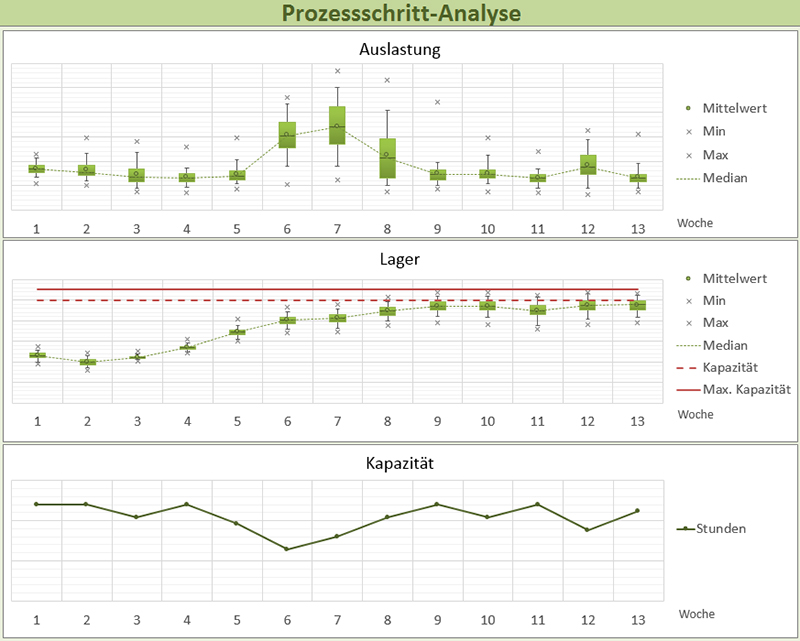Criteria and Problems of Capacity Planning
People and machinery are needed in factories to produce products and process orders. From manufacturing to shipping, various steps are carried out in a value adding stream. These steps must mesh together like interlocking gears. If only one cog fits, orders cannot be properly processed and overloads and backlogs occur at other points. Such unforeseen bottlenecks can lead to substantial economic losses.
Sufficient capacity is critical for smooth operations in the value stream. It is not enough to plan each step in a process separately: Perhaps, production is equipped with efficient machinery and achieves top throughput rates, but this is ultimately of little use if the logistics is inadequately staffed to perform the picking. All process steps and their interactions must be taken into account to coordinate each capacity.
Another problem is created by short-term capacity planning. Bottlenecks occur that can only be partially alleviated or are associated with high costs, such as leasing expensive storage areas. For this reason, a forward-looking view is important so that countermeasures may be implemented in the early stages. Of course, a forward looking capacity planning also carries risks such as an uncertain order book in the future.

